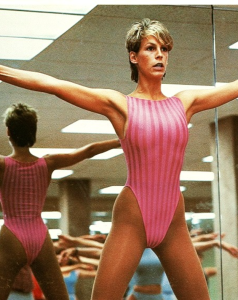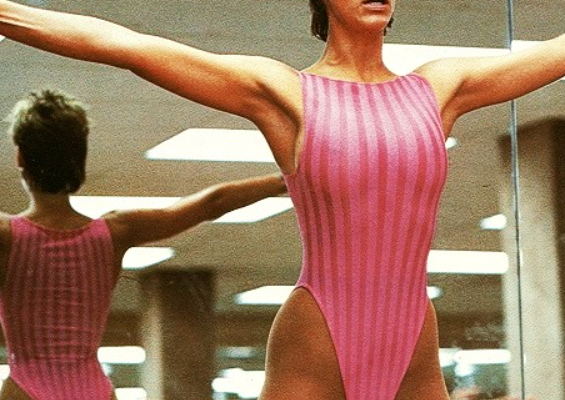Perfect: The Real Truth About the Iconic Aerobics Scenes
Few moments in pop culture are as instantly recognizable as the high-energy aerobics scenes that defined a generation of movies, TV shows, and music videos. From the neon leotards of the 1980s to modern homages in film and social media, these sequences have become synonymous with fun, fitness, and a particular kind of nostalgia that blends sweat, style, and pure spectacle. But behind the bouncing ponytails, shiny tights, and perfectly synchronized choreography lies a story far more complex than most audiences realize. Here’s the real truth about the iconic aerobics scenes.
The Birth of an Era
Aerobics as a cultural phenomenon didn’t begin on screen—it began in gyms, fitness studios, and living rooms. In the late 1970s and early 1980s, exercise guru Jane Fonda popularized aerobic workouts with her revolutionary videos. These weren’t just workouts; they were entertainment. Fonda’s combination of catchy music, energetic instruction, and visually engaging routines created a template that would influence countless directors, choreographers, and performers.
Hollywood, always quick to tap into trends, recognized the visual and commercial potential of aerobics. The bright colors, fast-paced movements, and coordinated group activity translated perfectly to film and television. By the early 1980s, aerobic sequences were a staple in teen movies, romantic comedies, and even dramas, often used to showcase character transformation, social dynamics, or just sheer fun.
Behind the Leotards
While audiences often remember the glamour of these scenes—the neon spandex, leg warmers, and carefully styled hair—the reality on set was much less glamorous. Actors and dancers frequently spent hours in physically demanding routines that required stamina, precision, and relentless repetition. Choreographers were notorious for pushing performers to the brink, especially in ensemble sequences where perfect synchronization was crucial.
In interviews, many actors from the era recall the challenges of performing aerobics scenes under intense studio lighting, which amplified the heat and made costumes even more uncomfortable. One stunt double famously described filming a high-energy scene in an 80-degree soundstage as “like being in a sauna with a marching band.” Yet, despite the discomfort, these scenes were often shot in long takes, adding to the exhaustion but also contributing to the electric energy that made the final product so memorable.
The Music Factor
No discussion of iconic aerobics scenes would be complete without mentioning the music. Pop hits, synthesized beats, and upbeat disco rhythms were not just background tracks—they were central to the choreography. Directors and choreographers carefully selected songs that could maintain momentum and energy, knowing that the right beat could turn a mundane workout into a cinematic moment.
Interestingly, music licensing often posed significant challenges. Some productions had to swap out songs after filming due to licensing restrictions, meaning that the music audiences ultimately heard in theaters or on television sometimes differed from what the actors actually performed to. Despite this, the connection between aerobics and music became so strong that it helped popularize certain songs and artists, solidifying their place in 1980s and 1990s pop culture.
The Cultural Impact
Aerobics scenes were more than just flashy entertainment; they reflected broader societal trends. They captured a period when health, fitness, and body image were becoming increasingly central to mainstream culture. Women, in particular, saw aerobics as a symbol of empowerment, independence, and social engagement. It wasn’t just about physical fitness—it was about confidence, visibility, and community.
At the same time, these sequences were often laden with cultural symbolism. Group workouts on screen could highlight friendship, rivalry, romance, or personal growth. The choreography was not just physical—it was narrative, conveying character development and emotional arcs through movement. In many ways, the aerobics scene became a shorthand for transformation, both literal and metaphorical.
The Comedy Factor
While aerobics was initially serious business, Hollywood soon realized its comedic potential. Over-the-top costumes, exaggerated moves, and intentionally awkward moments became a staple of parodies and comedy sketches. Films like Private Lessons and sketches on Saturday Night Live lampooned the intensity and sometimes absurdity of aerobics culture, highlighting both the enthusiasm and the ridiculousness of high-energy workouts.
These comedic interpretations didn’t diminish the artistry; rather, they celebrated it in a self-aware way. The juxtaposition of rigorous choreography with humorous exaggeration made audiences laugh while simultaneously appreciating the skill required to execute the routines.
Modern Homages and Nostalgia
Decades later, iconic aerobics scenes continue to influence pop culture. Music videos, commercials, and even TikTok videos pay tribute to the brightly colored leotards, synchronized steps, and high-octane energy of the originals. Filmmakers often use aerobics sequences to evoke nostalgia or create a playful, energetic tone.
In recent years, some productions have reimagined aerobics in new contexts, blending retro aesthetics with contemporary music and choreography. Yet even as the style evolves, the fundamental appeal remains: movement, music, and communal energy create a visual and emotional spectacle that audiences respond to instinctively.
The Untold Hardships
Despite the joy audiences associate with aerobics sequences, many performers have shared stories of the physical toll these scenes took. Extended shoots, multiple takes, and the need for flawless coordination often resulted in bruises, muscle strains, and sheer exhaustion. Makeup artists and costume designers also faced intense challenges, ensuring sweat and high-energy movement didn’t ruin continuity or visual appeal.
Moreover, performers frequently had to maintain a level of enthusiasm that belied their fatigue. While cameras captured smiling, energized faces, the reality was often grueling—testament to the professionalism and stamina of the actors and dancers involved.
The Lasting Legacy
Today, iconic aerobics scenes are more than a nostalgic footnote; they are a cultural touchstone. They capture an era, reflect societal attitudes toward health and fitness, and showcase the artistry of choreography, costume design, and cinematography. For many, these sequences remain emblematic of joy, energy, and the transformative power of movement.
They also serve as a reminder that even the seemingly lighthearted, fun moments on screen often involve immense effort, coordination, and creative vision. The next time viewers watch a perfectly executed aerobics scene, it’s worth remembering the hours of rehearsal, the physical strain, and the narrative thought that went into every step.
Conclusion
The iconic aerobics scenes of Hollywood are far more than just flashy visuals and catchy tunes. They are a reflection of cultural trends, a testament to the skill and stamina of performers, and a celebration of music, movement, and community. Behind the neon tights, leg warmers, and synchronized choreography lies a story of artistry, dedication, and, yes, a little sweat.
From their origins in fitness studios to their immortalization on screen, these sequences have become enduring symbols of a particular time and energy in entertainment history. They continue to inspire filmmakers, choreographers, and audiences alike—proving that the magic of aerobics is timeless, and the real truth behind the iconic scenes is just as compelling as the fun, energetic moments they created on screen.

